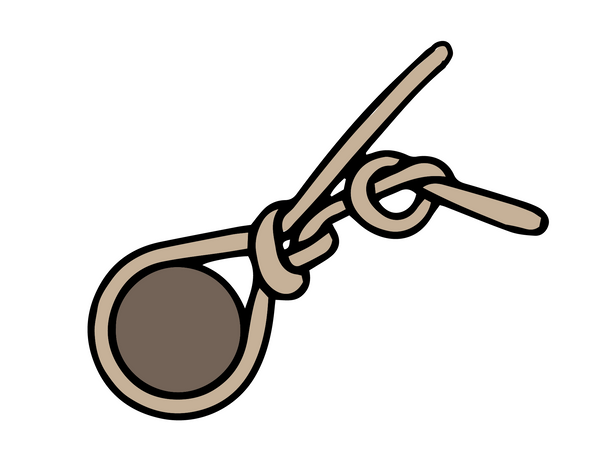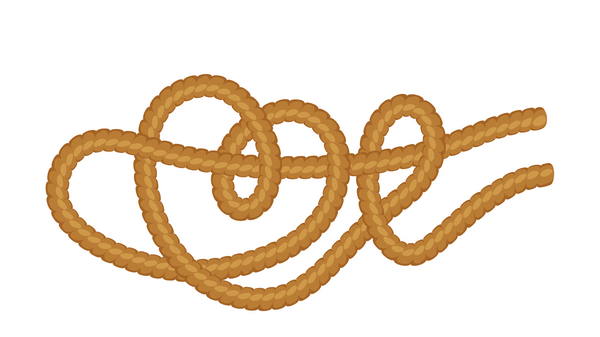
Five Best Bushcraft Knots
It's time to tie up the loose ends of our series on cordage. Pun fully intended. We've already covered our favorite types of synthetic cordage and how to make cordage from natural fibers, and now we'll finish the series by reviewing some of our favorite knots that we find useful on our bushcraft adventures. There are hundreds of knots with different purposes, strengths, and weaknesses, but we think these are generally handy to know, and you can use them for a wide range of purposes.
Knowing what knot to use and how to tie it is important for securing a ridgeline to hang a tarp, lash gear to kayak, carrying some materials you've gathered for a project, and countless other tasks. No matter what knots you decide to learn, be sure to practice them. You can carry around a piece of cordage and some cards with the steps on them, use mobile apps with animated how-tos, or simply keep some cordage handy for idle fidgeting.
Bowline

The bowline creates a fixed and secure loop at the end of a rope. It's useful for tasks such as a starting knot when lashing, creating makeshift harnesses, and anytime you want to create a loop that's strong and easy to untie . The bowline is known for its strength and reliability, even when under load.
- Form a small loop near the end of the rope.
- Pass the working end through the loop from underneath.
- Wrap the working end around the standing part.
- Pass the working end back down through the loop.
- Tighten the knot.
Canadian Jam Knot

Do you know what they call a Canadian Jam Knot that's tied in Canada? A Jam Knot. Thanks to Patrick Rollins of ESEE Knives for that one. The Canadian Jam Knot, aka an Arbor Knot, is useful for cinching a blanket, gathering together stalks or sticks, and attaching lines to fishing reels.
- Pass the cordage around the item or items.
- Use the working end to tie an overhand knot around the cordage.
- Then, tie a second overhand knot in the free end to act as a stopper. Finally, slide the knots down tight against the arbor.
READ MORE: DIY FIXIN' WAX
Sheet Bend

The sheet bend is most often used to join two ropes of different sizes or materials. It's particularly useful in bushcraft scenarios where you need to extend the length of a rope or repair a broken line. The sheet bend maintains a strong connection even under tension and is easy to untie.
- Create a bight in the thicker rope.
- Pass the working end of the thinner rope through the bight.
- Wrap the working end around both ropes.
- Pass the working end back under itself.
- Tighten the knot by pulling both ends.
Taut-line Hitch

The taut-line hitch is an adjustable knot commonly used for securing tent guy lines, or any other line that requires tension adjustment. Its ability to slide along the rope allows for easy tightening or loosening, making it perfect for maintaining tension in varying conditions.
- Wrap the rope around the anchor.
- Bring the working end behind the standing part.
- Wrap the working end around the standing part again, forming a loop.
- Pass the working end through the loop.
- Cinch the knot tight.
Trucker's Hitch

The trucker's hitch is a powerful knot for securing loads or creating a mechanical advantage when tightening lines. It's often used for tying down gear on vehicles, securing loads to pack frames, or creating a high-tension line for shelters. The knot provides a significant mechanical advantage, making it easier to cinch down tight.
- Tie a slippery half hitch around the anchor point.
- Pass the working end around the load and back through the loop created.
- Pull the working end to create tension.
- Secure the line with additional half hitches or other securing knots.
That's just a short round-up of some commonly useful knots in terms of bushcraft. If you have a favorite or unique knot, please share it by tagging us on Instagram or posting it on our Facebook page.


